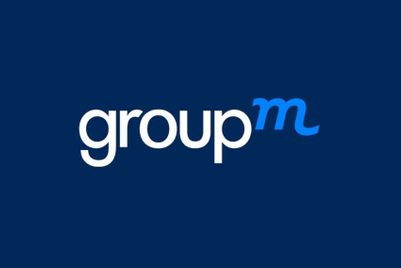
Internet media spending will account for 57.2 percent of total ad expenditures in 2017, but will see a lower growth rate than last year because internet penetration is nearing saturation in urban areas, according to GroupM's latest This Year, Next Year: China Media Industry Forecast.
TV spending is predicted to drop by 5.2 percent, although it remains the dominant media, while content marketing is also set to see strong gains.
Total media expenditures in China are forecast to grow by 7.8 percent and reach RMB 581 billion (US$84.4 billion) in 2017. The report cites many factors underpinning this steady increase: the expected global economic recovery, stable macroeconomic conditions, consumer confidence, large-scale urbanisation and government policies.
Here are some highlights of the report by category.
Internet
- Mobile internet users accounted for 95.1 percent of total internet users by the end of 2016, while iResearch predicted that the size of the mobile internet economy will surpass that of the PC internet economy for the first time this year.
- Ecommerce sites are valuable media properties in addition to being important sales channels. The rise of mobile ecommerce calls for brands to make traffic, operations, campaigns and design of their brand presence on leading mobile shopping apps a high priority.
- Brands should also invest in multiple platforms to tap into the cross-screen potential.
TV
- Media spend on TV is forecast to fall by 5.2 percent this year, although TV retains its status as the most influential single media type.
- Spending on TV advertising declined by 8 percent in the last quarter of 2016, with alcohol being the only category of the top five that increased its presence on TV, spending 27.1 percent more.
- FMCG giants P&G and Coca-Cola are re-evaluating the value of digital and paying heed to the effectiveness of TV again.
- The popularity of variety shows continues to soar, prompting CCTV to put more effort into developing content in this genre. Meanwhile, ad spend on CCTV channels is forecast to grow by 5 percent in 2017 compared to the previous year.
Content marketing
- This sector grows at the expense of loss in TV advertising, with monitoring data showing an almost 20 percent year-on-year increase in the number of placement formats last year.
- China has a liberal approach toward product placement in popular programmes such as variety and talk shows. According to a third-party product placement monitoring agency, product placement, including hosts reading out sponsor names and brand icons flashing in the screen corners, grew by 32 percent in frequency and 41 percent in broadcast time on satellite channels in 2016.
Out-of-home
- Ad spend on OOH is set to grow by 2.7 percent in 2017 on the back of 11.9 percent growth recorded in the last quarter of 2016. Websites, retail and services, software and automobiles are the four categories that increased spending in this sector in Q4 2016.
- Rapid urbanisation underpins the growth here, with expanding subway lines, for example, providing fertile ground for imaginative OOH media.
- There's an urban-rural divide according to media format: interactive digital channels in tier-1 and tier-2 cities, static billboards in tier-3 and tier-4 cities.
- New forms of OOH that were based on big data and interactive experience marketing were emerging trends in 2016.
- Integration is key. Ads featuring QR codes were a significant feature of OOH media growth in 2016.
- As expected, media spend in print is on a continuous decline. Advertisers spent 31.8 less money on newspapers in Q4 2016, and media spend in this category is forecast to drop by 53.9 percent below the 2016 level this year.
- For magazines, ad spend fell 33 percent below the spending in Q4 2015, while the forecast says that ad spend in 2017 will fall 38.8 percent below the 2016 level.
Radio
- Ad spend on radio is forecast to drop 8.3 percent below the 2016 level.
- Nevertheless, GroupM's Shan Han Jin research shows that the daily effective reach of radio is increasing across all tiers due to growing car ownership.
- Popular mobile radio apps are cited as the contributor towards the expanding coverage of radio in tier-1 cities.
Commenting on the forecast, Patrick Xu, GroupM and WPP China CEO stressed integration and relevance in brands' approach towards media spend.
"For the foreseeable future, we will see more examples of media integration and coexistence, while an increasing portion of competition between different types of media will consist of competition in terms of content," said Xu. "Effective advertising is linked to ‘relevance’, while ‘relevance’ is also about times, places, context, building and deepening cognition and actionability."
Speaking on the methodology, Rycan Di, chief investment officer of GroupM China, said media consumption trends were used as a guide for GroupM's approach due to the wide range of new media and technologies that have emerged over the recent years.
"We follow a people-focused philosophy of collecting, integrating and unearthing different data sources, in order to refine our in-depth consumer insights and apply them to everyday media investment, helping brands to communicate more effectively with their consumers," Di said in a release.


.jpg&h=334&w=500&q=100&v=20250320&c=1)

.jpg&h=334&w=500&q=100&v=20250320&c=1)
.jpg&h=334&w=500&q=100&v=20250320&c=1)

.jpeg&h=334&w=500&q=100&v=20250320&c=1)


.jpg&h=334&w=500&q=100&v=20250320&c=1)

.jpg&h=268&w=401&q=100&v=20250320&c=1)




.png&h=268&w=401&q=100&v=20250320&c=1)

.png&h=268&w=401&q=100&v=20250320&c=1)